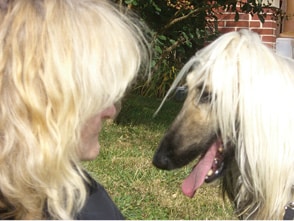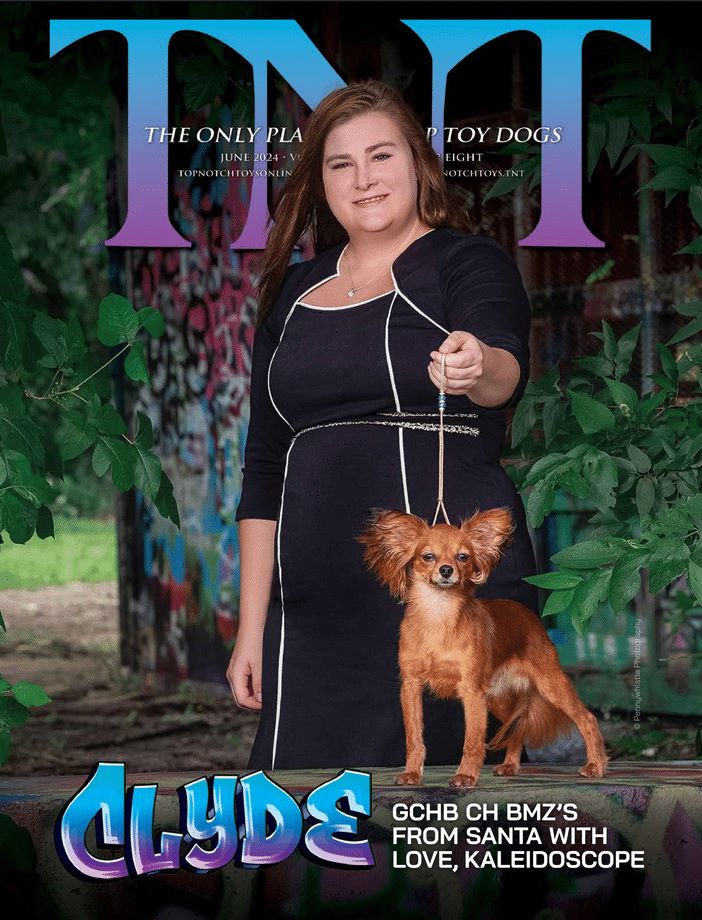The Bubble: We Can -and Should- Do Better
I was very gratified to read the responses to my recent column on the disappearing American show dog. My column had been shared on Facebook groups and I was able to read all the responses, both pro and con. I was hoping that it would create discussion and awareness of all the factors involved.
One of the repeated comments was that doodles and pitbulls were the reason for the decline in the numbers of show dogs and purebred dogs in general. Now I will burst your bubble! Doodles and pits are not the threat. They do not affect purebred show dogs! They may be affecting the market for purebred pets; long before there was such a thing as a designer dog or a doodle there were puppies born by the millions, produced by pet owners and commercial breeders or imported. Yes, litter lots were imported by pet store chains from across the Atlantic.
Puppies were available in pet stores and from ads in newspapers or magazines. Those puppies were purebred, perhaps not the best quality, but still purebred. People who bought one would continue to buy another of the same breed, and it would become a family tradition. Some buyers would go to a few dog shows and think it would be fun to participate too.
The doodle breeders have simply grabbed the pet market with clever advertising and marketing, and the “adopt don’t shop” message has worked in their favor.
There came a point when too many puppies from too many litters were being born, which included both purebred and mixed breeds. Breeders in the show community were concerned and started to breed less and less. Limited registration was introduced so that breeders could ensure that only the best puppies would be bred from, and that pet quality puppies would not be bred. It was widely embraced and became a hallmark of a reputable breeder to sell puppies with limited registrations and spay/neuter contracts. Good intentions that worked too well. In earlier days, many people who became serious exhibitors started by showing their pet, even a pet store puppy! This changed everything.
Puppy matches were popular and well supported in all regions of the country. Puppies could be shown as young as three months old, and owners were excited to show off their new puppy. When limited registration was introduced, those puppies were no longer entered at matches because the owners knew their puppy could not be entered at dog shows, so what was the point?
The doodle breeders have simply grabbed the pet market with clever advertising and marketing, and the “adopt don’t shop” message has worked in their favor. They position themselves as having home-raised puppies that will make great pets and companions. They are not a threat to dog shows or the breeders who support them. So, what is the problem? There has been a lot of discussion about breeders not being receptive to pet owners, and the difficulty that a potential buyer has of obtaining a puppy.
This stems back to the growing trend of breeders wanting to sell all or most of their puppies to show homes and to have multi-champion litters. That was not the way that it used to be. Breeders would evaluate their litters and between the age of birth and weaning they would make a decision as to which they would be keeping for the future, and the remainder would be available to pet/companion and non-breeding homes.
More than 20 years ago, breeders started demanding show homes only for their puppies, and several months later, or a year later, they would be complaining because they couldn’t sell them! They could have sold them, had they been willing to sell to pet homes. Instead, the hopeful pet buyer was disappointed and had to go looking for an alternative source, and that helped the breeders who were producing puppies with varying breed combinations.
Attitudes towards dog showing has also changed. I started showing dogs as a teenager in the UK with a very different system to that of the US, but in one respect it was no different in the United States. People looked at dog showing like a tennis tournament where everyone competes at the basic level, and then as you win each round, you get closer to the top. That applies in both countries; you start with class winners who go on to compete with the other class winners for best of both sexes, and then on to a further competition for Best of Breed, Best in Group, and Best in Show. It is a progression, just like a tennis tournament. That aspect of dog shows seems to have been lost. People do not see entering in and winning classes as part of the progression.
One commentator wrote, “AKC requires a pyramid, one winner and a bunch of lower levels to make the points, breeders churning out puppies to show, even if only a few earn championships!” That comment blew my mind! The whole point of it was that the few, the best, would have a title. The original concept was that these were the superior quality dogs and bitches that were worthy of a special designation.
If I am remembering correctly, at one time, AKC capped the number of dogs gaining the title at around 200 per year (not sure if that was both sexes combined or not), and there was a formula which was the basis of the point scale and the number of shows in a region which had attracted a major entry.
There were the inevitable comments about dog show politics, and of course, handlers. I have never worried about competing against handlers—but the breeder/owner-handler who shows up for one day out of four often has it in the bag! Too many people see the skill of a handler as the problem. A good handler can bring out the best in the dogs, and yes, hide their faults. Just remember one thing—they all started out as beginners too, and they worked at learning their craft. Anyone can.
I have written before about what I see as the “lost generation,” those who were discouraged 20-30 years ago and who could have been today’s mentors. I see so many people who have not been mentored by an older generation and have no concept of what dog shows used to be like. People complain about the cost of showing, but they must have the latest and shiniest supersized SUV or motor home. In past decades, the dog show wagon would not have been replaced until it could run no more. Breeders discuss the cost of vet fees, but breeders of the past created Westminster winners without spending hundreds on progesterone tests and artificial breedings. Something to think about.
I did find it to be concerning that few people gave any thought to the problems breeders already face from existing legislation, with no concern that things could get worse. Blame for the existing situation of decreasing dog show entries is externalized to money, judges, and doodles—and little recognition given to the basic cause. Fewer breeders producing fewer litters reduces the number of puppies that can be shown. Breeding less is, for some bizarre reason, often equated with producing higher quality, and breeding more frequently is referred to as “churning out puppies,” which must also be of lesser quality! Selection is reduced from choosing the best to working with whatever you have without any regard to quality. We can—and should—do better.










